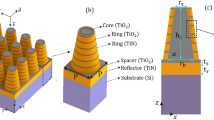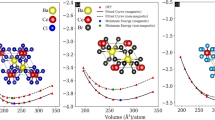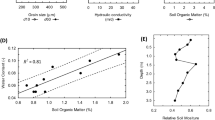Abstract
A FEW years ago I showed1 that mineral arboreal growth results in an almost simultaneous appearance of a compact (tree- and asbestos-like formations) and dispersed (‘streamers’ and opacity bands) system. Afterwards the range of mineral tree formations was extended from the ferrocyanide and silicate group of salts to calcium, barium, strontium, arsenates, arsenites, stannates, etc.2 Since then, it has been found that the dispersed system formation is not only specific to all arboreal growth but also invariably precedes it, being evolved in the course of eruption from the membrane protuberances—diffusion points of least resistance. Again, whilst the delicate ‘streamers’ and opacity bands exist only under carefully controlled conditions, the colloidal particles constituting these and shot out in myriads during the reaction have a much wider range of stability.
This is a preview of subscription content, access via your institution
Access options
Subscribe to this journal
Receive 51 print issues and online access
$199.00 per year
only $3.90 per issue
Buy this article
- Purchase on SpringerLink
- Instant access to full article PDF
Prices may be subject to local taxes which are calculated during checkout
Similar content being viewed by others
References
Copisarow, J. Chem. Soc., 230; 1927.
Copisarow, Koll. Z., 47, 60; 1929.
Author information
Authors and Affiliations
Rights and permissions
About this article
Cite this article
COPISAROW, M. Colloid Substrate in Photosynthesis. Nature 132, 67 (1933). https://doi.org/10.1038/132067b0
Issue date:
DOI: https://doi.org/10.1038/132067b0
This article is cited by
-
Colloid Substrate in Photosynthesis
Nature (1936)



